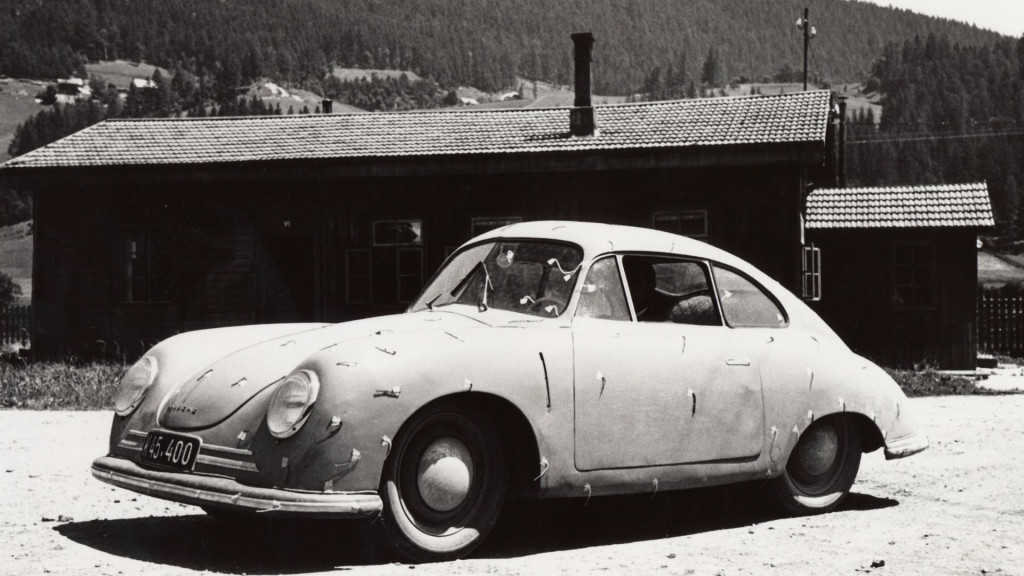- Quick Look at the 2020 Volkswagen Atlas Cross Sport | MotorTrend - March 13, 2024
- BMW Design – 2009 BMW Z4 – 2009 Detroit Auto Show - March 11, 2024
- Top 10 Car Features Women Love - October 7, 2023
Porsche’s first sports cars had aluminum body panels, but it was nature’s own lightweight material that made their iconic shape possible.
The Porsche 356 had bodywork that where the panels were hammered and hand rolled into shape, and a wooden frame model was used to ensure everything lined up.
That frame still exists, and is in relatively good condition. It’s at the Porsche Automuseum in Gmünd, Austria, where the first Porsche production cars were completed before manufacturing moved to Stuttgart, Germany.
The frame is sometimes called Holzklopfmodell, which is German for “hammered wooden frame,” but the frame itself wasn’t hammered. Rather, it served as a model the factory workers used for shaping and fitting of the aluminum body panels. It was a time-consuming process that sometimes required multiple attempts to get a door or fender to perfectly fit the frame, which was the exact shape of a 356 body. The process took at least 90 hours, according to Porsche.

Porsche 356/2 coupe manufactured in Gmünd, Austria
Handmade bodywork was primarily a feature of the earliest Austrian-built Porsches. Starting in 1948, Porsche built 52 cars in Gmünd, including 44 coupes and eight convertibles, plus between eight and 10 super light (SL) bodies that were completed by Porsche’s racing department in Stuttgart between 1951 and 1952.
When production shifted to Germany in 1949, Porsche switched to steel bodies and mechanized manufacturing processes, leaving hand-formed aluminum for specials like the 16 lightweight 356 America Roadsters. A new wooden frame eventually replaced the original.
Because steel is much harder than aluminum, Porsche started using presses to manufacture body panels, which also allowed it to produce cars at a faster rate. Today, the 356 wood frame remains as a reminder of the automaker’s early days.
